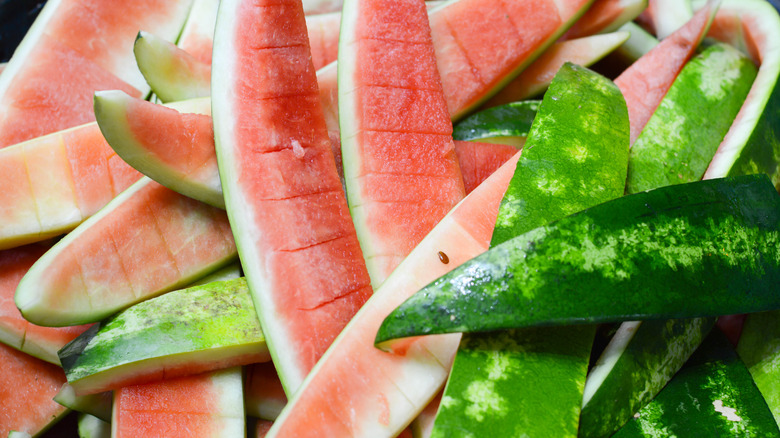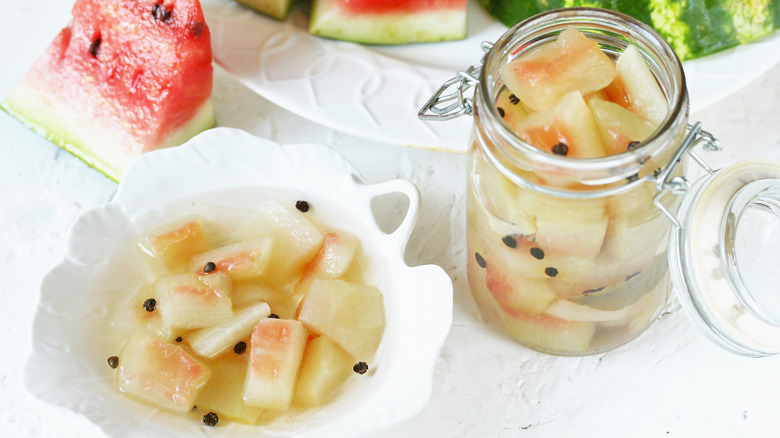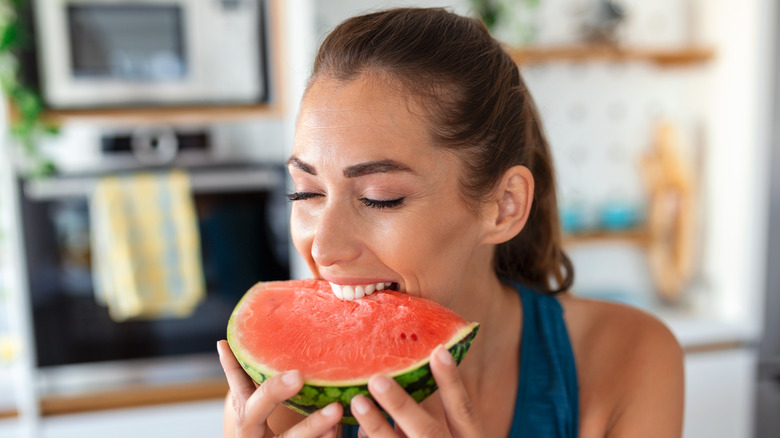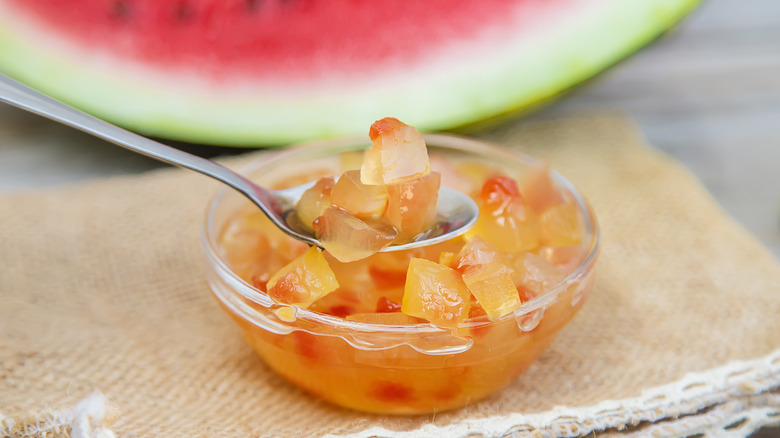Watermelon Rinds: The Secret Superfood We've Been Throwing Out
Few things feel better than eating a juicy watermelon when the temperature is soaring. This delicious fruit is 91% water, perfect for quenching thirst and keeping you hydrated. But did you know that watermelon rinds are edible, too? The rinds are chock-full of fiber, amino acids, minerals, and antioxidants, according to 2020 research published in the journal Molecules. These bioactive compounds may protect against heart disease, diabetes, cancer, and other chronic ailments.
Watermelon rinds can also taste good, depending on how you serve them. Mix them into smoothies, use them in stir-fries, or add them to salads. You can even roast them in the oven or pickle them for a crunchy snack. Think of it as a way to reduce food waste, add more nutrients to your diet, and try out new flavors. Just make sure you wash the rind thoroughly to remove any traces of pesticides, herbicides, and germs.
Watermelon rinds can boost satiety and improve heart health
A cup of watermelon has less than 1 gram of fiber and more than 9 grams of sugar. The rind, on the other hand, is about 16% fiber by weight, according to a 2022 study featured in the American-Eurasian Journal of Agricultural and Environmental Sciences. On top of that, it's lower in sugar than the flesh. Dietary fiber increases satiety, slows sugar absorption into the bloodstream, and may reduce cholesterol levels. Plus, it keeps you regular and supports digestive health.
In a 2021 study, researchers asked two groups of people to drink watermelon juice with or without rind. Subjects who consumed the juice with watermelon rinds experienced greater feelings of fullness and had lower postprandial blood sugar levels than those drinking plain watermelon juice, reports Current Developments in Nutrition. These beneficial effects were most likely due to the dietary fiber in the rind.
The rind also boasts high doses of citrulline, an amino acid with antioxidant, anti-inflammatory, and cardioprotective effects. Yellow watermelons have three times more citrulline in the rind than red watermelons and twice more than orange watermelons, according to a 2005 study published in the Journal of Chromatography A. This nutrient may protect against cancer, reduce intestinal inflammation, and increase protein synthesis, notes the journal Molecules. "And for avid athletes who may work out multiple times a day, l-citrulline could increase your performance and help you recover faster," notes Devon Peart, RD, MHSc, a dietitian at the Cleveland Clinic.
The rind is jam-packed with vitamins and antioxidants
Watermelon rinds are rich in coumarin, flavonoids, carotenoids, lignans, and other antioxidants. These compounds scavenge free radicals and fight oxidative stress, which may help prevent heart disease, macular degeneration, and cancer, suggests the journal Molecules. For example, beta-carotene may improve blood lipids, reduce body fat, and decrease insulin resistance. Over time, it may lower the risk of type II diabetes and cardiovascular problems, according to 2020 evidence published in Molecules.
Need one more reason to eat the rind? This part of the fruit boasts high doses of vitamins B6 and C. Pyridoxine, or vitamin B6, promotes heart health and may ease premenstrual syndrome. It's also essential for the proper functioning of the nervous and immune systems. Similarly, vitamin C supports immune function and cardiovascular health, among other benefits.
But that's not all. Watermelon rind also delivers moderate amounts of iron, magnesium, zinc, and other minerals. According to the American-Eurasian Journal of Agricultural and Environmental Sciences, the peel contains about 4% potassium by weight. The body needs this mineral to regulate sodium levels, blood pressure, nerve impulses, and muscle contractions. Other minerals are only present in trace amounts in the rind, but they can still improve your health.
How to eat watermelon rind without giving up flavor
Watermelon rind isn't just healthy — it's delicious, too. Although it's slightly bitter when consumed raw, you can cook it or mix it with other ingredients to make it more appetizing. For starters, grind it or cut it into chunks and add it to fruit or vegetable salads. It can be a perfect addition to Cobb salad recipes, but you can also mix it into kimchi or coleslaw. Its subtle flavor won't overpower the other ingredients.
Craving a refreshing summer smoothie? Mix watermelon rinds with cucumbers, lime juice, yogurt, and dill. The rinds also pair well with strawberries, raspberries, mangos, and pineapples; blend them to bring out their flavors. Another option is to stir-fry the rind with other veggies and garnish with roasted watermelon seeds. That's right — you can eat watermelon seeds for extra protein, iron, zinc, potassium, and B vitamins.
Some people use watermelon rinds in gazpacho, salsa, chutneys, fritters, or sushi. For example, you can cut the rinds into thin strips and use them as a substitute for nori in sushi rolls. If you're craving gazpacho, blend the rind with tomatoes, cucumbers, garlic, and herbs. Serve it cold with crackers, croutons, or toasted bread. You can also make fritters from grated watermelon rinds, flour, eggs, herbs, and spices. Combine all ingredients, and then fry them until golden brown. Dip them in mayo, Greek yogurt, or garlic sauce for added flavor.



